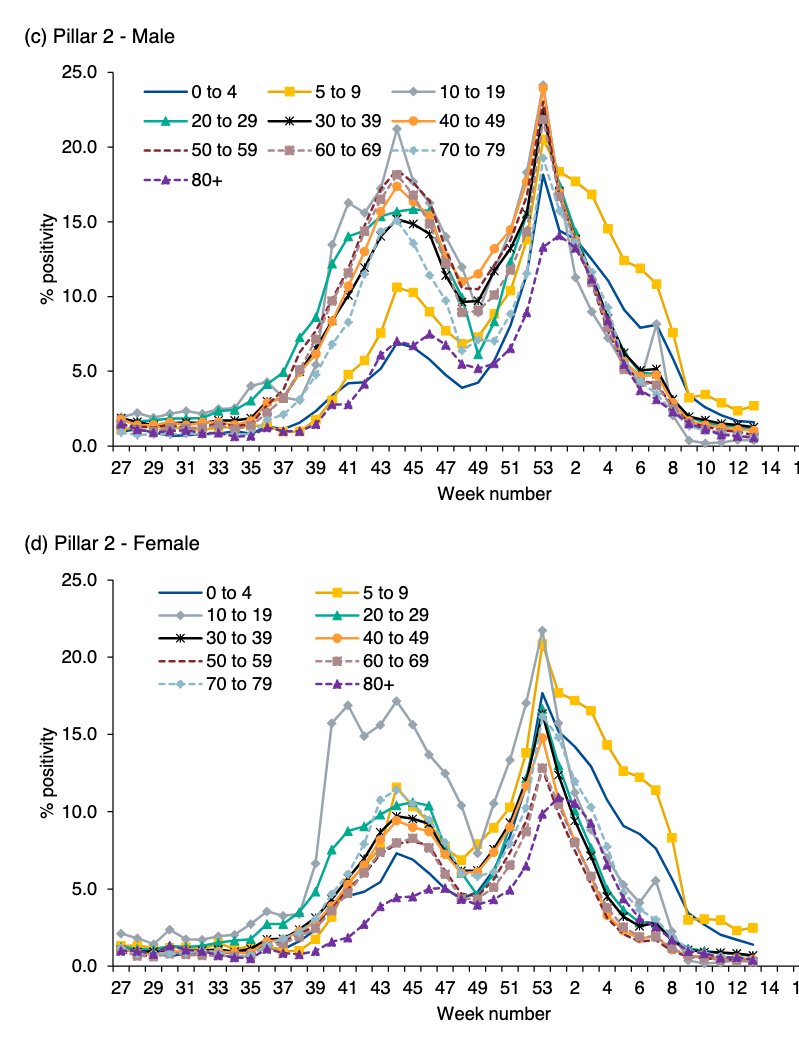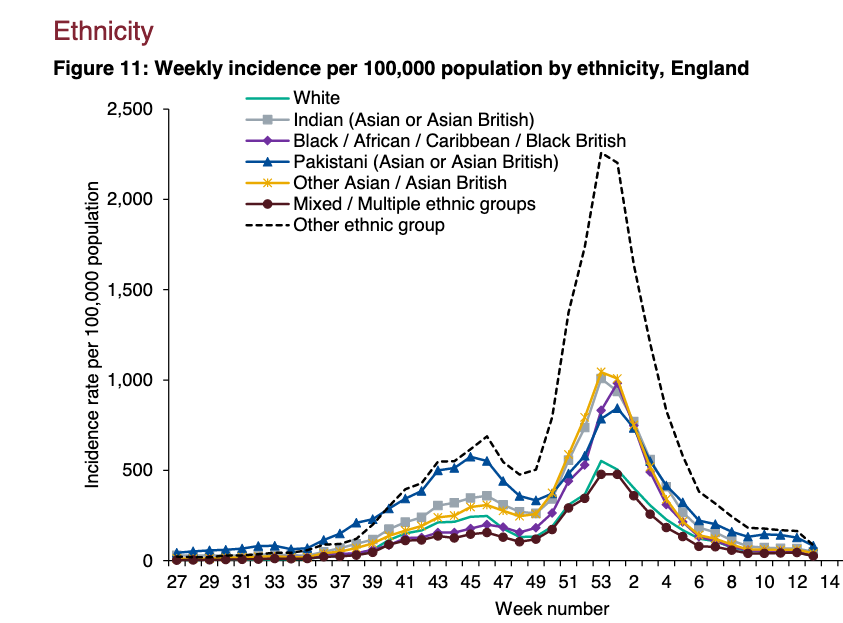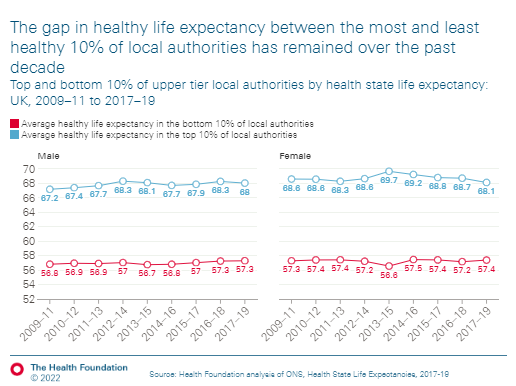This week's @PHE_uk COVID surveillance report, 29th March to 4th April (incl. start of the school hols). 🧵
⬇️ case rates, partly from fewer 10-19y/o LFDs with no clear sign yet of schools leading to ⬆️cases in older ages
+ important variation by region
gov.uk/government/sta…
⬇️ case rates, partly from fewer 10-19y/o LFDs with no clear sign yet of schools leading to ⬆️cases in older ages
+ important variation by region
gov.uk/government/sta…
Further drop in cases in the most recent week following a bit of a flattening off in previous weeks - with some of this due to school holidays and fewer LFD tests.
Worth noting that for March, both REACT and ONS surveys suggest that case rates are generally static.


Worth noting that for March, both REACT and ONS surveys suggest that case rates are generally static.



Big drop in LFD use, which is mainly due to a drop in test use by secondary schools (see T&T data).
The drop off has accelerated with the school holidays, but the move from testing in school to at home may have contributed over the past few weeks.

The drop off has accelerated with the school holidays, but the move from testing in school to at home may have contributed over the past few weeks.


The % of tests coming back positive has really encouragingly fallen both for PCR tests (now just 1.6% from 1.9%) and for LFD tests (now 0.18% down from 0.25%).
However, T&T data to 31st March suggest positivity in secondary schools is largely unchanged at 0.17% compared to 0.19% wk before. 

Start of school hols (therefore stopping LFD test use) has seen case rates for 10-19y/o dramatically fall back into the pack.
And T&T data show that wk ending 31st March, positivity in 2ndry schools has only dropped a little (to 0.17% from 0.19%).
And T&T data show that wk ending 31st March, positivity in 2ndry schools has only dropped a little (to 0.17% from 0.19%).

This suggests fall in case rates among 10-19y/o seen in PHE data is likely mainly from less LFD test use rather than necessarily fewer people infected.
But encouragingly it also doesn't point to clear spread into older ages, where case rates and positivity continue to fall.

But encouragingly it also doesn't point to clear spread into older ages, where case rates and positivity continue to fall.


Both REACT-1 & ONS surveys show that population prevalence remains highest in 5-9y/o, but this doesn't show in the PHE data on case rates as they are only based on those getting tested.
However, the PHE positivity data does point to this.

However, the PHE positivity data does point to this.
https://twitter.com/ADMBriggs/status/1380076852841230337?s=20

Good to see overall falls across all regions, again largely driven by the drop in case rates among 10-19y/os.
Big regional variation, however.
Case rates remain highest in Yorkshire and Humber at 67 cases per 100,000, four times rates in the SW (just 15.5 cases per 100,000)

Big regional variation, however.
Case rates remain highest in Yorkshire and Humber at 67 cases per 100,000, four times rates in the SW (just 15.5 cases per 100,000)


And at upper tier local authority there is a 10 fold variation in rates, ranging from 9 cases per 100,000 in Devon to 105 per 100,000 in Barnsley. 

And it's still the same areas of the country with the highest case rates
https://twitter.com/ADMBriggs/status/1377656081732804609?s=20
The differences by ethnicity are less marked, which will also reflect how a greater proportion of younger people - where case rates have fallen - are from Black, Asian and mixed ethnic groups. 



When broken down by age, differences by deprivation remain, although interesting to see narrower differences among 17-19y/os.
REACT again today highlighted the big differences in infection rates by deprivation.

REACT again today highlighted the big differences in infection rates by deprivation.
https://twitter.com/ADMBriggs/status/1380076857417207808?s=20

In terms of outbreaks reported to PHE, great to see that last week's rise in care home outbreaks may have just been a one off. 

And school hols also mean a big drop for school outbreak/incident notifications.
Outbreak notifications also remain low in hospitals and workplaces.


Outbreak notifications also remain low in hospitals and workplaces.



Hospitalisations generally lag 1-3wks behind infections, so it's v positive that despite ONS and REACT data suggesting falls in infection rates may have stalled in March, hosp admissions are still falling. 





Finally, vaccine uptake rates remain incredibly high - a remarkable 90%+ among all age groups over 65yrs.
This will mask variation by ethnicity and deprivation, so continued efforts here remain v important.

This will mask variation by ethnicity and deprivation, so continued efforts here remain v important.


PHE surveil rpt☝️@felly500 @deb_cohen @martinmckee @carolecadwalla @mgtmccartney @ADPHUK @Jeanelleuk @fascinatorfun @profchrisham @petermbenglish @HPIAndyCowper
@Davewwest @HSJEditor @KateAlvanley @IndependentSage @nedwards_1 @SamanthaJonesUK @ewanbirney @FurberA @Dr_D_Robertson
@Davewwest @HSJEditor @KateAlvanley @IndependentSage @nedwards_1 @SamanthaJonesUK @ewanbirney @FurberA @Dr_D_Robertson
• • •
Missing some Tweet in this thread? You can try to
force a refresh



























